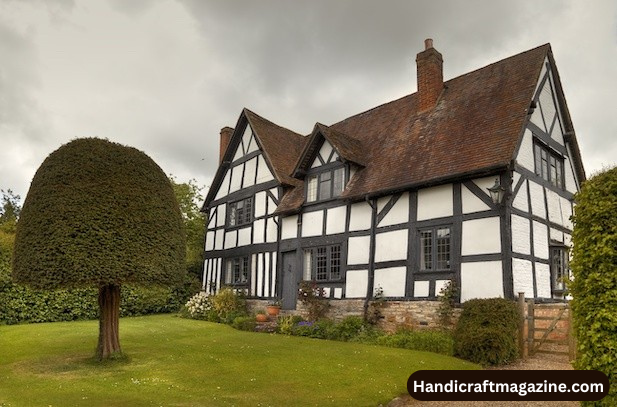Introduction
Have you ever wondered what makes a Tudor house stand out in architectural history? These distinctive homes, known for their half-timbered exteriors and steeply pitched roofs, have been admired for centuries. From their medieval origins to their revival in the 20th century, Tudor houses continue to captivate homeowners and history enthusiasts alike.
But what defines a Tudor house, and why are they still popular today? In this article, we will explore the unique characteristics of Tudor homes, their historical significance, and how you can incorporate Tudor-style elements into your home. Whether you’re looking to buy, renovate, or simply learn more, this guide will provide valuable insights.
What Defines a Tudor House?
How Did Tudor Architecture Begin?
Tudor-style architecture originated in England during the late 15th century and flourished through the early 17th century. This style, heavily influenced by medieval design, emphasized strong wooden framework, steep gables, and decorative brickwork. In the United States, Tudor Revival homes became popular in the early 20th century, particularly in suburban neighborhoods.
What Are the Key Features of a Tudor House?
Tudor houses have distinct architectural elements that set them apart from other styles. Some defining features include:
- Half-timbering: Exposed wooden beams with stucco or brick infill.
- Steeply pitched roofs: Designed for practical drainage and aesthetic appeal.
- Decorative chimneys: Often made of intricate brickwork with unique designs.
- Tall, narrow windows: Typically grouped in sets with leaded glass.
- Arched doorways: Featuring heavy wooden doors with iron hardware.
Why Are Tudor Houses Still Popular?
Do Tudor Homes Have Lasting Appeal?
Despite originating centuries ago, Tudor-style homes remain a favorite due to their historic charm and durability. The combination of old-world craftsmanship and cozy, inviting interiors makes them highly desirable among homeowners who appreciate character and uniqueness.
How Do Tudor Houses Fit into Modern Living?
While traditional Tudor homes may lack open floor plans, modern renovations allow for updates that maintain their character while improving functionality. Many homeowners choose to remodel kitchens and living spaces while preserving the exterior’s historic charm.
How to Design Your Home with Tudor Elements
Can You Incorporate Tudor Style in a Modern Home?
Absolutely! If you love the Tudor aesthetic but live in a contemporary house, you can still add key elements to create a Tudor-inspired look. Consider incorporating:
- Exposed wood beams in ceilings or walls.
- Leaded glass windows for an authentic feel.
- Brick or stone accents to enhance exterior character.
- Gothic-style furniture with dark wood finishes.
What Are the Best Colors for a Tudor Home?
Traditional Tudor homes use earthy, warm tones that blend well with natural materials. Some popular colors include:
- Dark brown or black for timber framing.
- Cream or white for stucco walls.
- Deep reds or dark greens for doors and window trims.
How to Maintain a Tudor House
Are Tudor Homes Expensive to Maintain?
Since Tudor homes often feature wood and brick construction, they require regular maintenance to preserve their beauty. Some key areas to focus on include:
- Inspecting timber beams: Ensure there is no rot or termite damage.
- Sealing leaded glass windows: To prevent drafts and leaks.
- Checking for brick deterioration: Repair cracks or missing mortar.
- Maintaining steep roofs: Regular inspections help prevent leaks and structural issues.
How Can You Improve Energy Efficiency in a Tudor Home?
Older Tudor homes may lack modern insulation, leading to higher energy costs. However, homeowners can make improvements such as:
- Installing energy-efficient windows while maintaining their traditional look.
- Adding insulation to walls and attics to retain heat.
- Upgrading HVAC systems to improve efficiency.
Conclusion
Is a Tudor house the right choice for you? Whether you admire their medieval charm or want to incorporate Tudor-inspired elements into your home, these timeless structures offer beauty and historical significance. By understanding their architectural features, maintenance needs, and design possibilities, you can appreciate why Tudor homes continue to be a cherished style for homeowners worldwide.
If you’re considering buying or renovating a Tudor house, start exploring design inspirations and restoration tips to bring your dream home to life.
